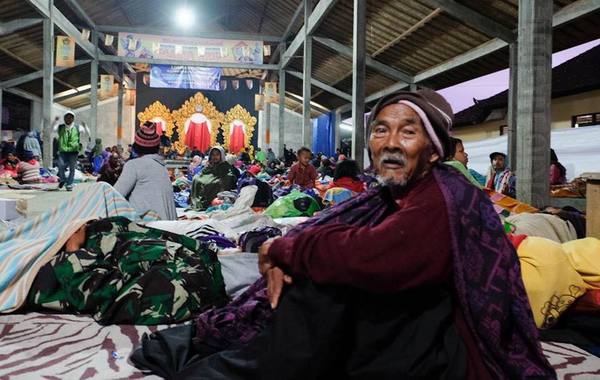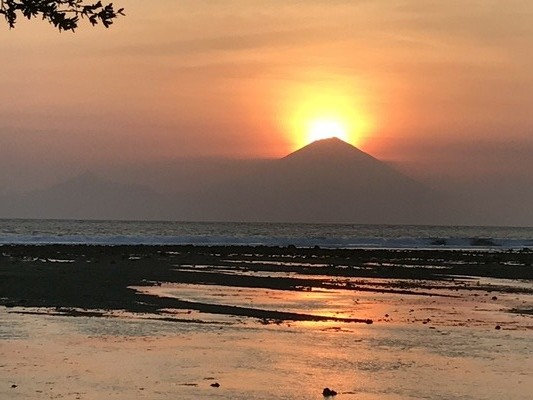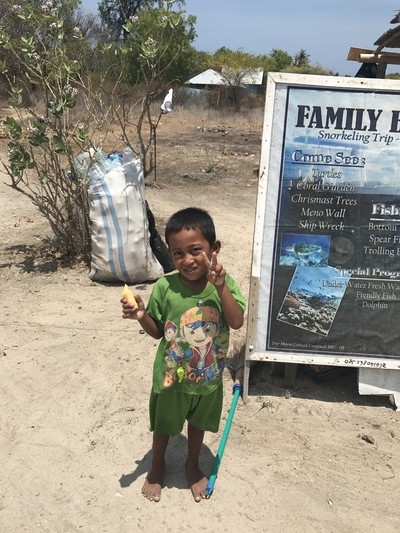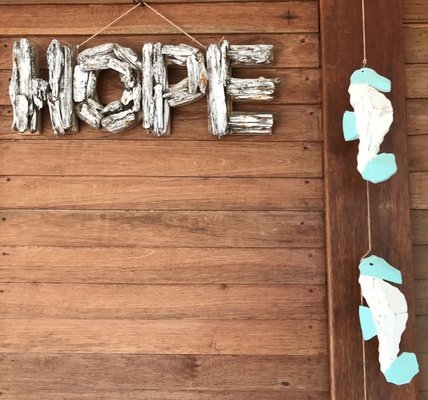By Phil Jarratt
One evening last week I wandered across the sandy strip from our accommodation in the Gili Isles (which is a bit like saying an ATM machine!) to the rocky shore, and took a snapshot of one of the most beautiful sunsets I have seen in a lifetime of looking at good ones.
Gunung Agung, the most significant peak in Bali, below which resides the Hindu mother temple of Besakih, was bathed in an exquisite yellow-red light that made me catch my breath as I looked across the narrow Bali Sea.
But later that same evening, as I caught up with the world from my computer, I realised that the beauty of Agung concealed a beast within.
The beast is now upon us, with 50,000 of the poorest people in Bali evacuated from their humble homes and sitting on hard earth floors in community halls and sportsgrounds in the safe haven of Klungkung while they wait to see if their former lives will survive the first great eruption in the Ring of Fire for more than half a century.
In 2013, on the occasion of the fiftieth anniversary of the last major eruption of Gunung Agung, when 1100 people lost their lives and countless others lost their homes and livelihood, I interviewed a wonderful woman named Lelia Lewis at her home in Sanur.
Lelia, then 85, had arrived in Bali in 1953 with her husband Rodger, as members of the Christian Missionary Alliance.
I have no truck with Christian missionaries who throughout history have destroyed native cultures to inflict their own, but the Lewises were a different kettle of fish. Rodger had long gone when I first met Lelia, through my friendship with Dick Lewis, their son and a novelist and surfing mate. But as soon as I encountered Lelia I realised that her brand of muscular Christianity was about saving lives first, souls second.
Lelia told me about the various theories as to what caused the disastrous eruption of 1963 – the wrong selection of dates for the Eka Dasa Rudra religious celebration, or the more favoured divine retribution for the alleged debauchery of Sukarno, father of the Republic, who had displeased the gods by building a holiday mansion above the holy temple at Tampaksiring and then entertained young Balinese women there.
Whatever the cause, Lelia and Rodger had to house the homeless and tend to them through six weeks of intense eruptions, a year of continued activity, and then years of rebuilding and recovery.
Now it’s all coming back. As I write we are expecting a major eruption at any moment, but perhaps it won’t happen for a month or more. The seismic evidence is that it will happen, but when? In the meantime the poorest of the poor sit on the hard ground in Klungkung and wait.
For those of you with a special interest in helping the people of Bali, a relief fund has been set up by the Kopernik foundation. More information at kopernik.info/project/mount-agung-emergency.com
A few days of Hope
The name of our shabby little villa on Gili Trawangan was “Hope”, one of four in just one two-storey building squeezed between a concrete wall and a dusty lane. The others were “Peace”, “Love” and rather incongruously “Beach”.
The young European backpackers above us in Beach seemed to spend most of the night marching in formation from one side of the villa to the other, perhaps looking for candles, since the power went off at least two or three times a night.
Peace was occupied by the owners, two Iranian men who live in Sweden when not hanging around their island paradise, smoking cigarettes and fixing each other’s man-buns. They didn’t seem very relaxed, perhaps waiting for guests to complain about the power outages, or the bathroom rats that ate all the toilet paper, or the broken pool recliners, or the fact that the hammock and the only day-beds in the garden were constantly occupied by them and their overflowing ashtrays.
We didn’t complain. Knowing that people were sleeping on the floor and queuing for rice handouts in Klungkung, it seemed churlish to even consider it. We simply ate our cold egg and coffee complimentary breakfasts and pedalled away on the most roadworthy of their junk-heap house bikes, looking for a stretch of beach that offered some protection from the howling onshore wind that blew every day.
We also booked very late in school holidays, and didn’t have much choice. And in any case, we were there to spend time with friends from France, and that was wonderful – a linguistics immersion course over fine food and wine as they tried to reignite their basic Bahasa Indonesia, while we struggled to resume where we left our conversational French a dozen years ago.
Another highlight was braving the choppy channel in a small boat to explore neighbouring Gili Meno for the first time.
The least-populated and least-developed of the Gilis, Meno is also the island leading the way on environmental issues, with island-wide Sunday clean-ups and most restaurants serving water in glass carafes, rather than the ubiquitous plastic bottles, while across the way on Gili T, the centre of the island is one big landfill dump, and the coast is dotted with luxury beach club construction sites.
At least there are still no cars or motorbikes on the islands, other than the odd electric scooter.
Transport is still by foot, bike or the horsedrawn cidomo taxis. But I wonder how long that will last.










